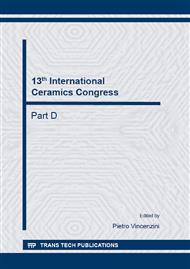p.43
p.51
p.57
p.66
p.72
p.78
p.84
p.93
p.103
Modelling of the Oxygen Transport through MIEC Membrane in Transient Stage
Abstract:
The transient stage is critical due to the stress induced by the chemical and thermal strain. In order to predict this strain, the oxygen activity field through the membrane needs to be known. Usually, the membrane is divided into three zones: the bulk where diffusion takes place and the two surfaces where exchanges between atmosphere and membrane take place. Oxygen bulk diffusion is well described by the Wagner theory. A consensus has not yet emerged regarding the surface exchange models proposed in the literature. Moreover, these models describe the permanent state, and cannot be extended to the transient stage. A new macroscopic surface exchange model which allows computing transient stage is proposed. This model assumed that the oxygen flux is governed by the association/dissociation of adsorbed oxygen and by the high energetic cost of oxygen reduction/oxidation. Then, the balance of transient specie only present on the surface is introduced to account for these two phenomena. The oxygen activity fields predicted by the proposed model are in agreement with the measures of chemical potential drop between the membrane and the atmosphere in permanent state. Transient stage measured during isothermal expansion test is partially reproduced.
Info:
Periodical:
Pages:
72-77
Citation:
Online since:
October 2014
Price:
Сopyright:
© 2014 Trans Tech Publications Ltd. All Rights Reserved
Share:
Citation:


